Abstract
In 1983, Coates conducted a survey that ranked the side-effects perceived by patients receiving chemotherapy in the order of their severity. Vomiting and nausea were found to be the two most distressing side-effects. They have an impact on quality of life and compliance with treatment. The development of 5HT3 antagonists has been a major step forward in the prevention and treatment of chemotherapy-induced nausea and vomiting. Presently, these antiemetics are routinely used as concomitant therapy in emetogenic chemotherapy regimens. The purpose of this study was to evaluate the impact of 5HT3 antagonists on patient perceptions of the side-effects of chemotherapy. Coates' survey was replicated in patients who received 5HT3 antagonists for acute nausea and vomiting resulting from emetogenic chemotherapy. Patients received the survey to identify those physical and non-physical side-effects that they attributed to chemotherapy and were asked to rank the five most distressing side-effects. Of the 197 patients who consented to take part in the study, 181 were evaluable. Nausea, hair loss and vomiting were described as the three most distressing side-effects of chemotherapy. Eighty per cent of all the patients actually experienced nausea and 57% experienced vomiting. Hair loss appeared to be more distressing to women (P < 0.001) but, in other aspects, gender, age and marital status did not influence the ranking of the three most distressing side-effects. Constipation was ranked as 6th and was not identified as a distressing side-effect in 1983. Nausea and vomiting remain to be the first and third most distressing side-effects of chemotherapy, even though the incidence and severity of acute nausea and vomiting are now significantly reduced.
Full text
PDF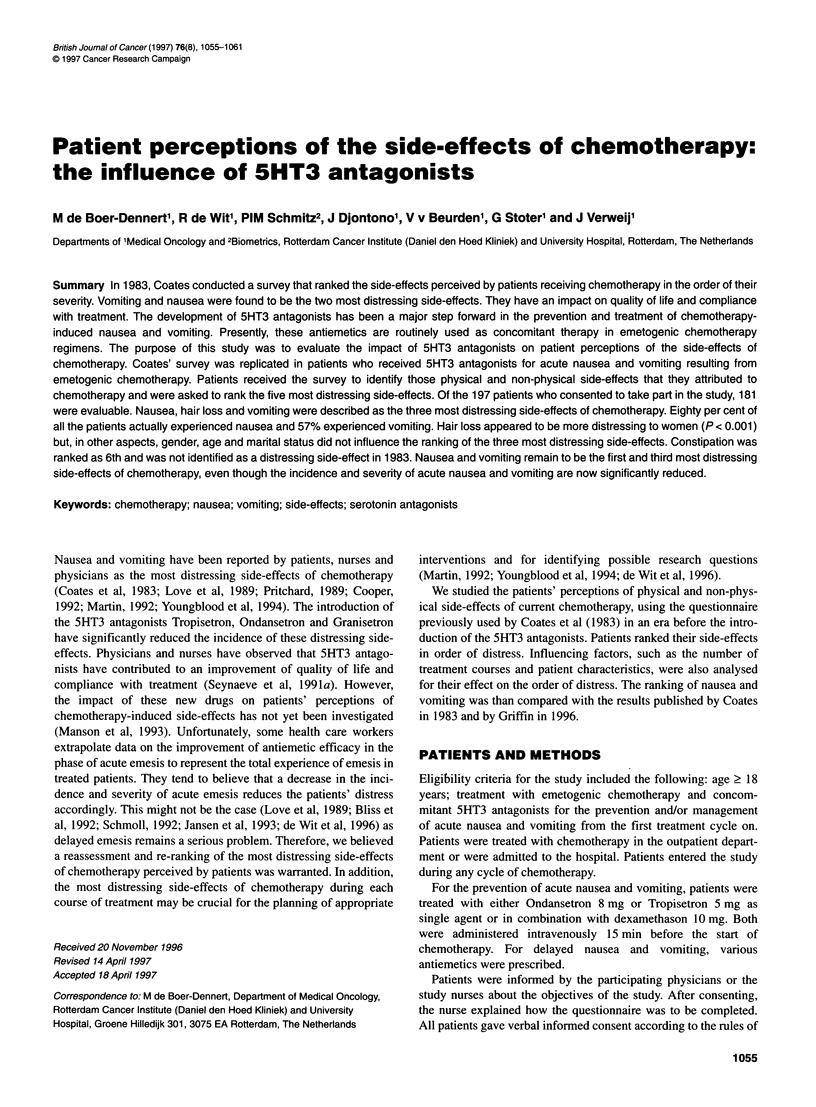
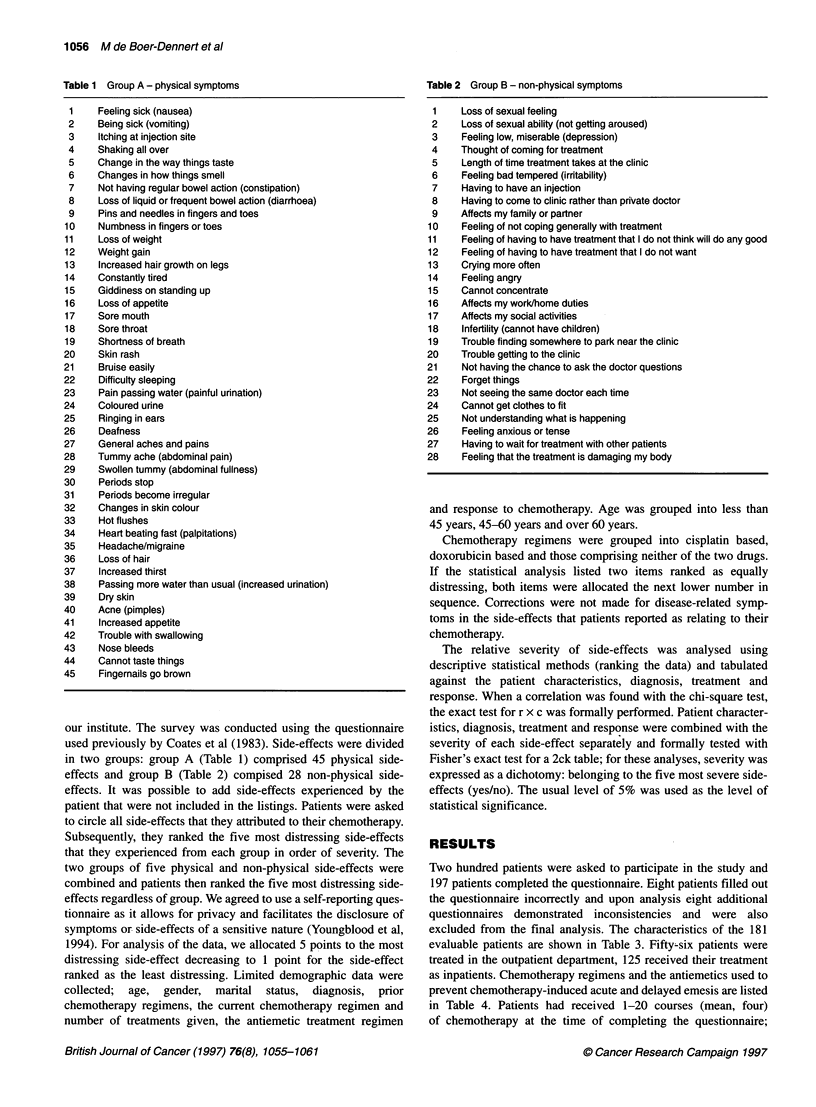
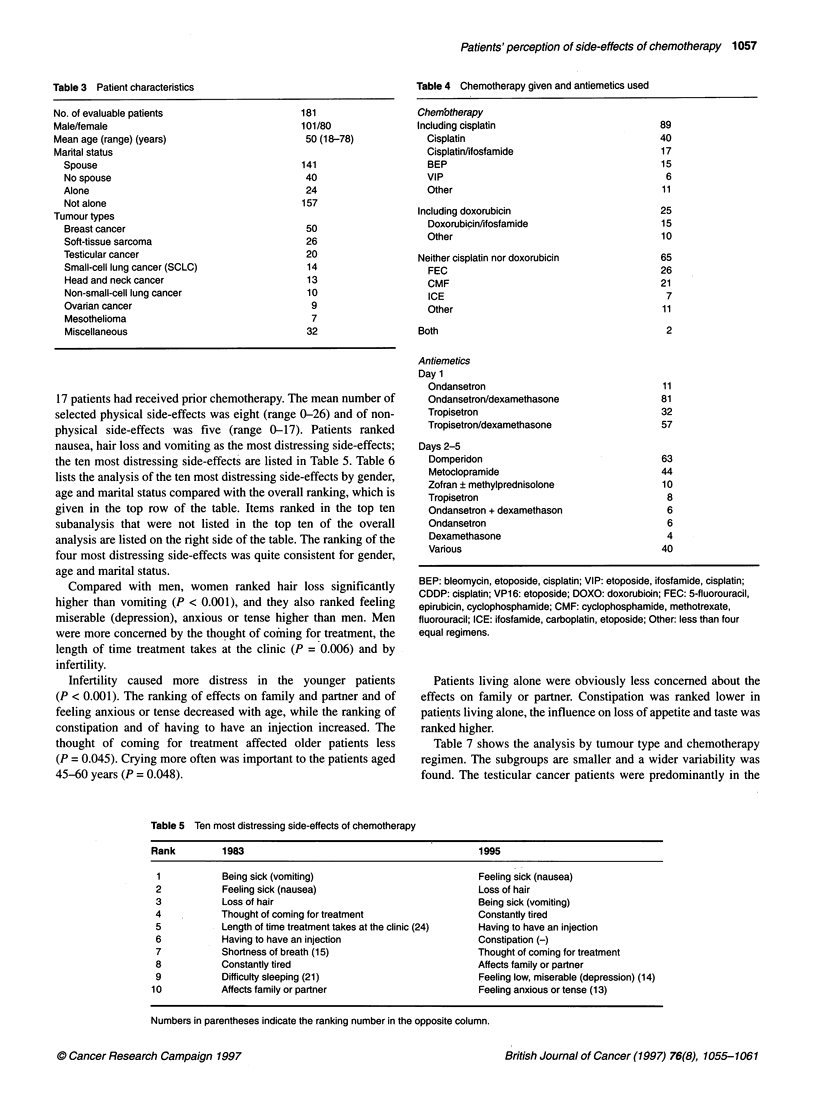

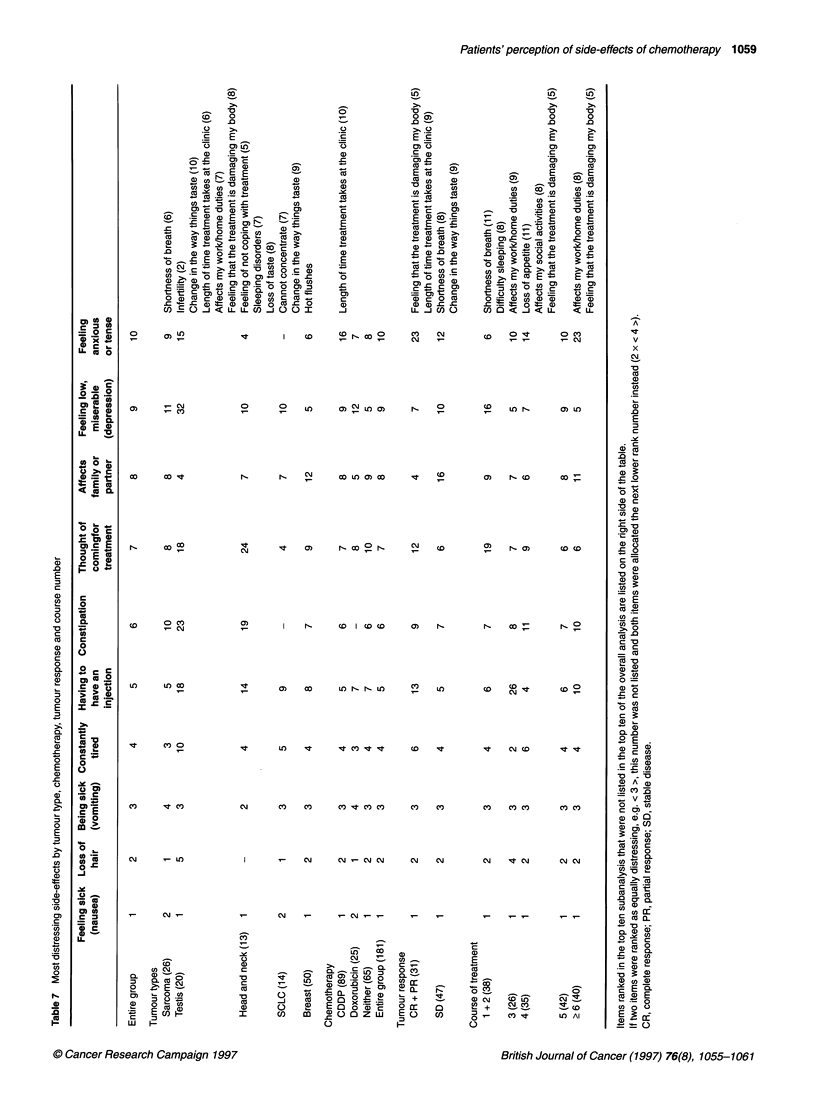
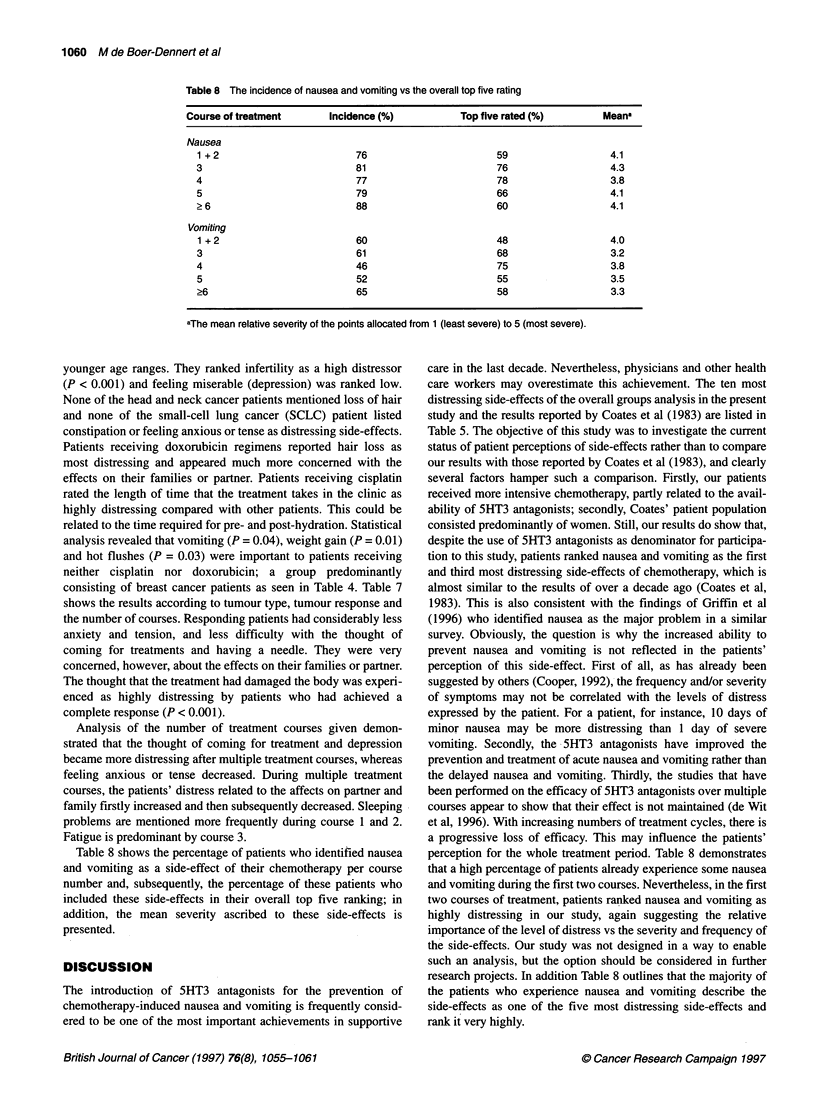

Selected References
These references are in PubMed. This may not be the complete list of references from this article.
- Bliss J. M., Robertson B., Selby P. J. The impact of nausea and vomiting upon quality of life measures. Br J Cancer Suppl. 1992 Dec;19:S14–S23. [PMC free article] [PubMed] [Google Scholar]
- Coates A., Abraham S., Kaye S. B., Sowerbutts T., Frewin C., Fox R. M., Tattersall M. H. On the receiving end--patient perception of the side-effects of cancer chemotherapy. Eur J Cancer Clin Oncol. 1983 Feb;19(2):203–208. doi: 10.1016/0277-5379(83)90418-2. [DOI] [PubMed] [Google Scholar]
- Cooper S., Georgiou V. The impact of cytotoxic chemotherapy--perspectives from patients, specialists and nurses. Eur J Cancer. 1992;28A Suppl 1:S36–S38. doi: 10.1016/0959-8049(92)90635-f. [DOI] [PubMed] [Google Scholar]
- Drasga R. E., Einhorn L. H., Williams S. D., Patel D. N., Stevens E. E. Fertility after chemotherapy for testicular cancer. J Clin Oncol. 1983 Mar;1(3):179–183. doi: 10.1200/JCO.1983.1.3.179. [DOI] [PubMed] [Google Scholar]
- Griffin A. M., Butow P. N., Coates A. S., Childs A. M., Ellis P. M., Dunn S. M., Tattersall M. H. On the receiving end. V: Patient perceptions of the side effects of cancer chemotherapy in 1993. Ann Oncol. 1996 Feb;7(2):189–195. doi: 10.1093/oxfordjournals.annonc.a010548. [DOI] [PubMed] [Google Scholar]
- Jansen C., Halliburton P., Dibble S., Dodd M. J. Family problems during cancer chemotherapy. Oncol Nurs Forum. 1993 May;20(4):689–696. [PubMed] [Google Scholar]
- Love R. R., Leventhal H., Easterling D. V., Nerenz D. R. Side effects and emotional distress during cancer chemotherapy. Cancer. 1989 Feb 1;63(3):604–612. doi: 10.1002/1097-0142(19890201)63:3<604::aid-cncr2820630334>3.0.co;2-2. [DOI] [PubMed] [Google Scholar]
- Manson H., Manderino M. A., Johnson M. H. Chemotherapy: thoughts and images of patients with cancer. Oncol Nurs Forum. 1993 Apr;20(3):527–532. [PubMed] [Google Scholar]
- Martin M. Myths and realities of antiemetic treatment. Br J Cancer Suppl. 1992 Dec;19:S46–S53. [PMC free article] [PubMed] [Google Scholar]
- Schmoll H. J. Quality of life measurements in anti-emetic trials: a discussion of Professor Selby's paper. Br J Cancer Suppl. 1992 Dec;19:S24–S25. [PMC free article] [PubMed] [Google Scholar]
- Youngblood M., Williams P. D., Eyles H., Waring J., Runyon S. A comparison of two methods of assessing cancer therapy-related symptoms. Cancer Nurs. 1994 Feb;17(1):37–44. [PubMed] [Google Scholar]
- de Wit R., Schmitz P. I., Verweij J., de Boer-Dennert M., de Mulder P. H., Planting A. S., van der Burg M. E., Stoter G. Analysis of cumulative probabilities shows that the efficacy of 5HT3 antagonist prophylaxis is not maintained. J Clin Oncol. 1996 Feb;14(2):644–651. doi: 10.1200/JCO.1996.14.2.644. [DOI] [PubMed] [Google Scholar]


